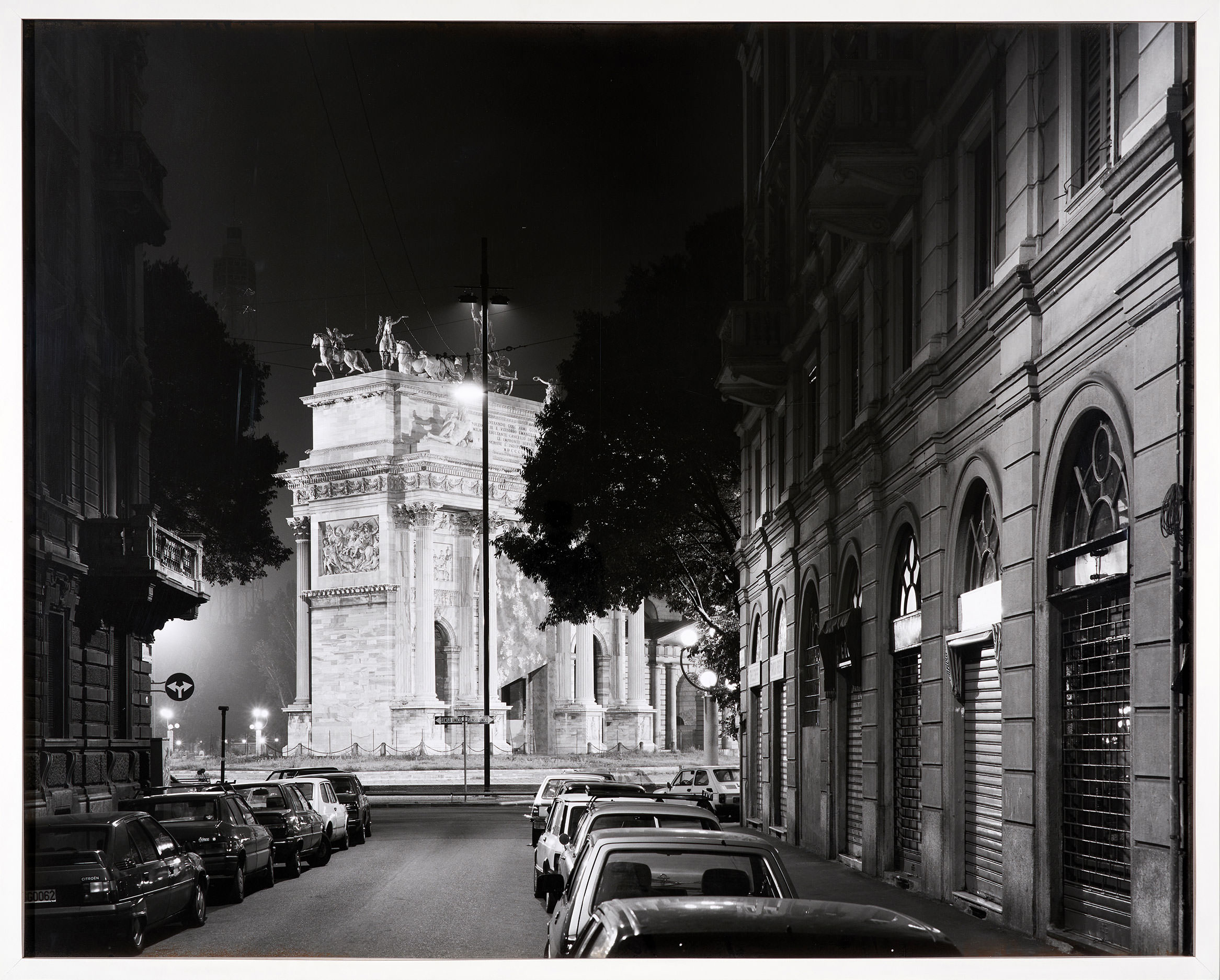Gabriele Basilico
Gabriele Basilico (1944-2013) was one of the greatest European photographers, known internationally for his research on the urban landscape.
He defined himself as a measurer of space. Born in Milan, after studying architecture Basilico began his profession as a photographer devoting to landscape photography and more particularly to architectural photography.
Letter to a City (Milan)
I was born in this city. I love it the way you love an old and dear friend. I grew up in this city. It has shaped my passions, hopes and fears. I delight in the lovely and sordid aspects of its body, its neighborhoods and houses, its walls and pavements. It has its own beauty and ugliness, there for all to see.
These physical characteristics are the embodiment of its history and they acquire even more meaning when compared to other cities. It is as if it is a living being that breathes and expands above us like a protective mantle that shelters and bewilders us at the same time.
Over the years it has become, for me, a seaport from which to depart for other seas and other cities. It is a harbor where foreign specimens and the traces of distant lands wash in with the tide, joining the images that I have brought back from previous journeys. When I return to this harbor the experiences I have had while away are metabolized and reconstituted in the images I continually create of the city. Thus creating a bridge between the past and the present, the near and the far according to whim and the beating of the heart.
Modest findings of contemporary archeology - this city belongs to me and I to it, almost as if I were a particle floating within its enormous body. I am obsessed with the need to know it. A need to interpret its features and its hidden parts, but also its famous places and most known aspects, over and over again. Between us there is a wide-open landscape that provides us with a constantly changing perspective. At times I feel as if it is suddenly revealing itself more fully to me, that it is telling me of its obstructions, its consistency and its material. The city uses me, inhabits me.
Gabriele Basilico
G. Basilico, Interrupted City, Actar, Barcelona, 1999.
A City on the Couch
The French movie director Jacques Tati used to say, “When you are the author of a film, when you write it and shoot it you must love it very much.” It's a kind of love that forces the author to look into his or her subject's eyes in order to understand how much of this love will be reciprocated.
Gabriele Basilico loves his subjects; in a particular way he loves Milano and in a morbid melancholic way he loves Milano at night. The city is the main character of Basilico's endless, untitled, photographic novel that takes place in a meta-urban region where the buildings devour people at sunset to later reflect on the necessity of their presence within the city's structure.
Milano as a city, maybe more than any other in Europe, represents the state of transition between the north and the south of the old continent. Its buildings and streets dive into a never accomplished future, a postponed utopia. Basilico goes at night, again and again, like a rejected lover, under those buildings, to look at them, seeking an answer about his and their presence in that same place called Milano, a city that in the course of the years became more of a concept than a place in which to live and to build new structures. Conceptually Milano represents the promise that Italy never maintained. Practically Milano is a metropolis that never very well disguised its longing for that small industrious town it would have liked to be. Basilico’s photos are between architecture and anthropology. The city is analyzed as a model or as a patient whose symptoms could lead to a better understanding of her habits and her life. The night is like an empty stomach that allows looking at its guts more clearly. Basilico waits for the night as a way to observe throughout the city's serenity its weaknesses and true feelings. Milano lays on Basilico's couch in the attempt to understand itself in a sort of photographic therapy. Finally, the ultimate desire of the photographer – as an urbanist shrink - is to see his patient abandoned, transformed into a ghost, into a tautology of its own function. At night the city suffers esthetic insomnia while Basilico takes advantage of it by taking portraits. Each portrait of Milano has the same mood, but always a different thought. Milano shares with its therapist and author the same shy idea of their communal destiny to be part of the same transitional time. The buildings in the night rise like stalagmites into the cave of industrialization, defining their own age and time. Basilico eventually becomes himself one of those buildings, a landmark in the sclerotic skyline of Milano. His vision is one from the many windows that loom over deserted streets. The night is then the camera, the narrator of a story like many others, of a place like many others that at night it happens also to be called Milano.
Francesco Bonami
Honorary Director of Fondazione Sandretto Re Baudengo, Turin - Italy











